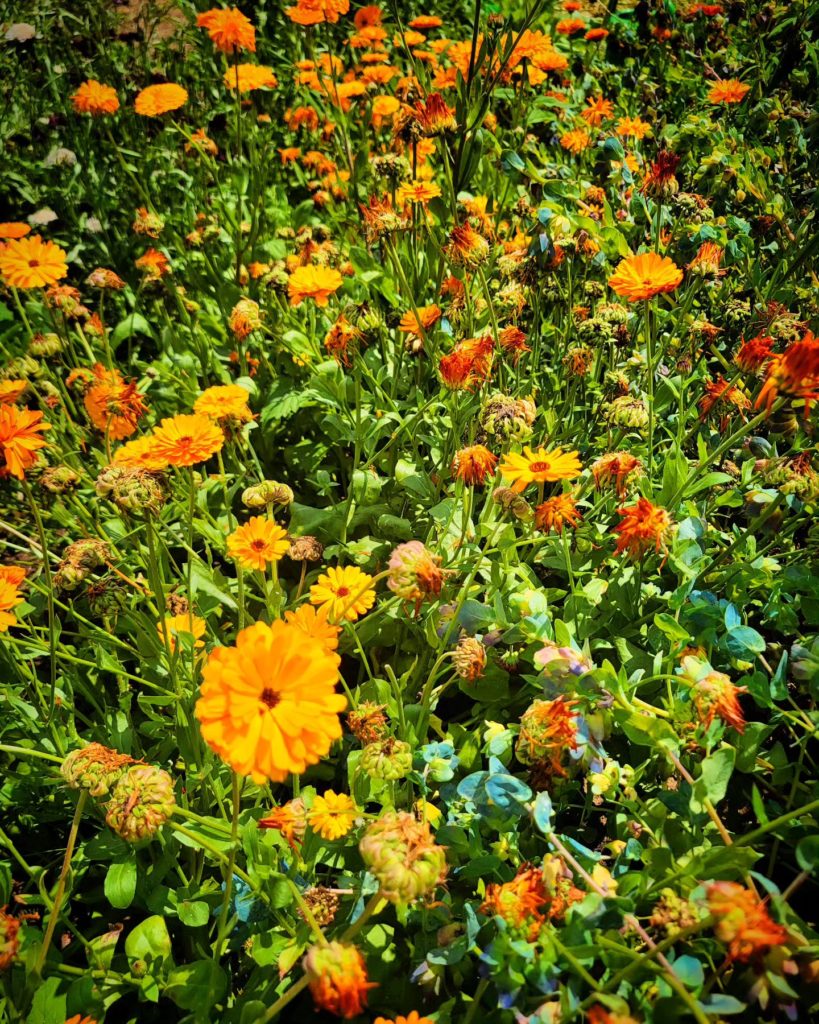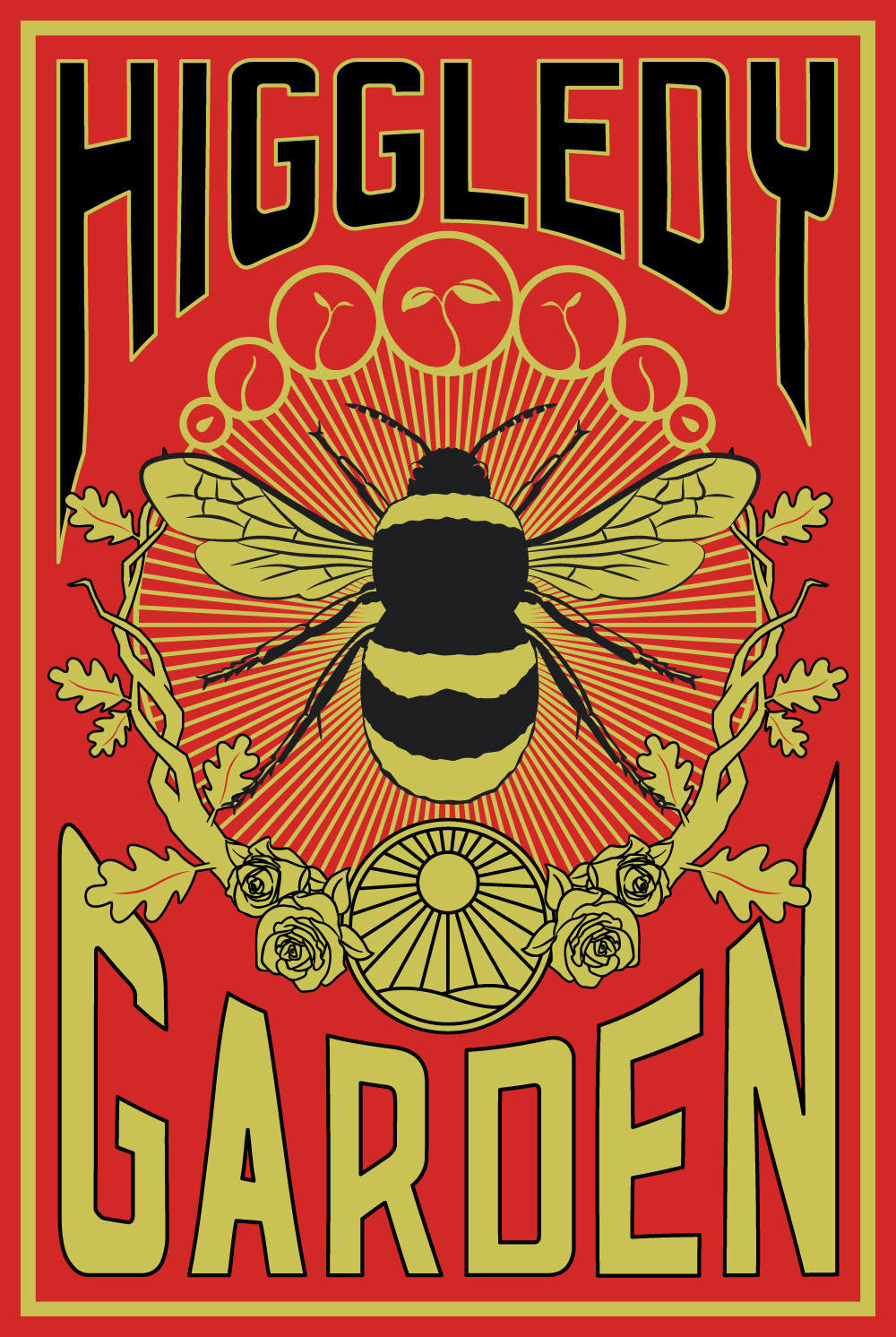Growing Calendula from seed. A Higgledy ramble.


I don’t want to be dramatic, but if calendula were a person, I’d probably marry it. It’s cheerful, undemanding, always turns up on time, and smells a bit like freshly opened crayons and old-fashioned soap. What more do you want in a life partner?
Calendula — not to be confused with those ruffly French marigolds that smell like a punch in the nose — is a proper old cottage garden soul. Latin name Calendula officinalis, but don’t let that put you off. ‘Officinalis’ just means it was used in ye olde herbal apothecaries, probably rubbed on everything from boils to broken hearts.
In the garden, calendula’s like the friend who brings sausage rolls and makes everyone feel welcome. It’s always smiling, always up for a bit of sunshine, and frankly, we need more of that energy.
Varieties to Fall Madly in Love With
Indian Prince: The Spicy One
If Art Shades is the artist and Snow Princess is the debutante, Indian Prince is the one who turns up to the village fête wearing a silk shirt and smelling faintly of cardamom.
Deep, rich, burnt orange petals with a secret – backs dipped in burgundy like he’s been rolling around in velvet curtains. Pop him in the border and he’ll smoulder away from June to frost, charming the hoverflies and making the calendulas next door feel frankly underdressed.
Grows about 60cm tall and holds his head high, which is more than can be said for me after a pint of homebrew and a go on the tombola.
Art Shades: The Bohemian Rhapsody
Now Art Shades is a free spirit. She doesn’t do matching. One stem is peachy-orange, the next is lemon curd, the next is some baffling shade of creamsicle-pink that doesn’t exist in nature — except, of course, it does, right here.
This mix is pure sunshine in seed form. She’s not going to win any prizes for uniformity, but who needs that? She’s got the soul of a tie-dye workshop and the attitude of someone who keeps bees, wears hemp trousers, and knows how to fix a caravan axle with baler twine.
Excellent for those of us who want a bit of chaos in the cutting garden. Cut them young, pop them in a jug by the sink, and feel smugly artistic every time you boil the kettle.
Snow Princess: The Cool Customer
Finally, the elusive Snow Princess. A bit of a unicorn in the calendula world. While the others are out there doing the salsa in full tangerine glory, she’s the cool one in white linen, sipping elderflower cordial and reading Jeanette Winterson in a hammock.
Her blooms are ivory-cream, with maybe the faintest echo of buttery yellow in the centre if she’s feeling generous. Absolutely heavenly next to something dark — try her with Black Ball cornflower or Nigella ‘Midnight’ if you fancy a garden palette with a bit of tension and drama.
Height-wise, she’s not towering, but she’s no wallflower either. Treat her with care, and she’ll reward you with a gentle glow through summer, like moonlight in the parsley patch.
How to Grow Calendula Without Making a Fuss
Honestly, if you can drop seed into soil and walk away, you can grow calendula. They’re the gateway drug to flower growing. They’re the plant equivalent of a slow cooker — chuck it in, check it occasionally, and feel like a wizard.
When to sow:
Spring sowings from March to May will give you a glorious summer show. But — and here’s the secret handshake — autumn sowings (September-ish) will give you tougher plants, earlier flowers, and the quiet satisfaction of feeling like you’re getting away with something.
Where to plant:
Full sun is best. They’re not sunbathers, but they do like a bit of light to strut their stuff. Will grow in almost anything except a swamp. Mine are thriving in what can only be described as “rubble with ambition.”
How to sow:
Sow direct where they’re to flower, or in modules if you want a bit more order. Just cover the seed lightly, water it in, and mutter something encouraging. Germination is quick. Like, put the kettle on and they’re up quick.
Maintenance:
Deadhead like a Victorian chaperone. The more you pick, the more they flower. If you ignore them, they’ll set seed and go a bit existential. No judgement — we’ve all been there — but better to keep them feeling young and useful.
Folklore, Remedies, and Other Marigold Mayhem
Calendula has a surprisingly long CV.
-
In old herbals, it was considered good for skin problems, melancholy, and minor wounds. Calendula salve is still a thing — especially among those who believe in beeswax and the healing power of cupboard contents.
-
In Elizabethan England, it was added to stews and broths. This might be romantic or it might be revolting. I haven’t tried it. Report back if you do. (It’s technically edible, but do mind the bitterness unless you’re particularly cross with your dinner guests.)
-
Medieval monks grew them in physic gardens, and Victorian gardeners popped them in every border for colour and cheer. If you squint hard enough, you can probably see their ghosts gently deadheading by moonlight.
-
They used to be called “poor man’s saffron.” You can, in fact, steep the petals to tint rice yellow. But again, probably best to grow them for joy and leave the paella to the professionals.
Why I Keep Coming Back to Calendula
Because they’re unpretentious. Because they bloom their heads off. Because they’ll germinate in a bootprint and flower in gravel, and still have the good manners to look pretty doing it.
They’re excellent for pollinators, self-seeders (without being too thuggish), and make excellent cut flowers. They’ve even got the decency to dry well, if you’re the sort who likes to hang bunches of things upside down in the shed and pretend it’s a Tudor apothecary.
Calendula are the golden retrievers of the flower world. Loyal. Friendly. Sometimes a bit slobbery around the edges. But always happy to see you.
Final Thoughts from the Biscuit Tin
If you only grow one thing this year, grow calendula. Actually, grow three. Get the Indian Prince to do the heavy lifting in the border, let Art Shades spill joyfully into the paths, and pop Snow Princess in the posh end of the garden with the scented stocks and self-seeding orlaya.
They’ll repay you in colour, calm, and a quiet sense of triumph. And on days when nothing else is going right — when the dog’s eaten your planting plan and your coffee’s gone cold — you’ll spot that first orange flower and think, “Well. Maybe it’s not all bad.”
And you’d be right.
